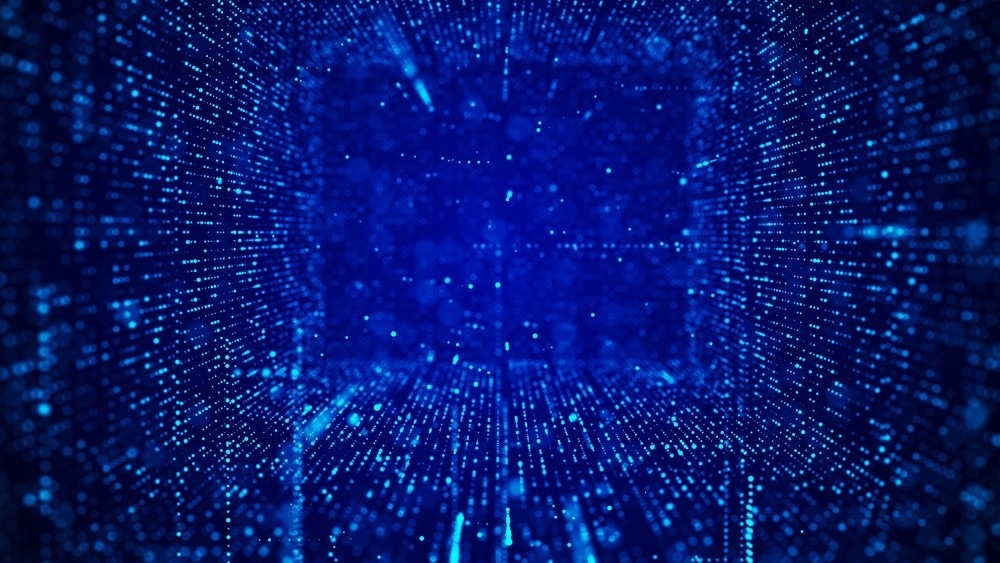Quantum dots (QDs) are nanoscale crystals that can emit distinct colors of light. Quantum dot-based displays offer improved power economy, luminance, and color fidelity than prior generations of screens. However, producing blue quantum dots, one of the three colors necessary to show full-color pictures, has proven to be particularly challenging.

Study: Precision Synthesis and Atomistic Analysis of Deep-Blue Cubic Quantum Dots Made via Self-Organization. Image Credit: Flow 37/Shutterstock.com
A recent study published in the Journal of the American Chemical Society focuses on this issue by describing a unique self-organizing approach for producing lead bromide perovskite quantum dots. The research also incorporates cutting-edge imaging technology to characterize these novel blue quantum dots.
Quantum Dots (QDs): Why are They Important?
Quantum dots (QDs) are nanometer-sized semiconductor particles with photonic and electrical characteristics that vary from bigger particles due to quantum mechanics.
Quantum dots (QDs) are used in optoelectronic devices and quantum computing, among other things, and are referred to as "artificial atoms" due to their confined and distinct electronic properties. Quantum dots have characteristics that fall in between those of bulk semiconductors and individual atoms and molecules. Their photoelectric qualities vary depending on their size and shape.
Quantum dots (QDs) are considered attractive materials for the emissive constituent of light-emitting diodes (LEDs) due to their high color intensity in a small spectral region, facile color tunability, and notable stability. Moreover, QD-based materials exhibit refined colors, longer lifetimes, reduced production costs, and lower energy requirements compared to typical luminescent materials used in organic light-emitting diodes (OLEDs).
Challenges Associated with the Synthesis of Quantum Dots
Quantum dots should ideally have a high quantum output and appropriate size homogeneity, as well as accurate shape control for simulating valency and bond orientation. However, this demanding condition becomes increasingly difficult to achieve as the QDs get smaller, with prior research failing to synthesize compact, high-quality, deep-blue radiating perovskite QDs with acceptable purity.
This is because their creation was fashioned by colloid synthesis, which relies on hot injection procedures under nitrogen. When the components get smaller, high temperatures induce rapid deposition, making the synthesis more difficult to regulate.
Displays based on QD-LEDs are already available, but the technology is still in its early stages, and existing solutions have several limitations, particularly concerning the blue subpixels. Blue light is utilized to create green and red light through a process known as down-conversion. This often means that the production of blue quantum dots is very complicated and expensive.
Moreover, traditional purity measures like full width at half maximum (FWHM) and photoluminescence quantum yield (PLQY) are inappropriate for atomic precision characterization of individual quantum dots.
Highlights of the Current Study
Encouraged by recent advancements in self-organization chemistry and transmission electron microscopy (TEM), the researchers in this work generated lead bromide perovskite magic-sized quantum dots under ambient circumstances by self-organization of a lead malate chelate compound and phosphorus tribromide. The composition and dynamic characteristics of the individual quantum dots were studied using millisecond and angstrom resolution electron microscopic studies.
"Our strategy is bottom up. We built on our team's knowledge of self-organizing chemistry to precisely control molecules until they form the structures we want. Think of it like building a house from bricks rather than carving one from stone. It's much easier to be precise, design the way you want, and is more efficient and cost-effective too," said Professor Eiichi Nakamura, Lead Author of the current study.
Malic acid (MLA) was used to inhibit the creation of irregular formations. This promoted the production of micron-sized cubes, whose size could be reduced by the introduction of oleylamine, resulting in the formation of ≈2.5 nanometers (nm) blue-emitting perovskite quantum dots.
Important Findings of the Research
When exposed to UV radiation, the as-prepared perovskite blue quantum dots emit virtually flawless blue light. This is due to the quantum dot's unusual chemical composition, a combination of organic and inorganic chemicals such as lead perovskite, malic acid, and oleylamine.
At 460 nm, the QD shows quantitative luminescence and steady photoluminescence with a narrow half-maximum linewidth of less than 15 nm, indicating minimal structural flaws. As a result, the cubic quantum dot should be regarded as a molecule rather than a nanocrystal since it lacks translational symmetry.
The controlled synthesis and accurate analysis of perovskite blue quantum dots accomplished in this work show the promise of cinematic chemistry for nanomaterial characterization and materials science investigation beyond conventional limits.
Reference
Chevalier, O. J. et al. (2022). Precision Synthesis and Atomistic Analysis of Deep-Blue Cubic Quantum Dots Made via Self-Organization. Journal of the American Chemical Society. Available at: https://doi.org/10.1021/jacs.2c08227
Disclaimer: The views expressed here are those of the author expressed in their private capacity and do not necessarily represent the views of AZoM.com Limited T/A AZoNetwork the owner and operator of this website. This disclaimer forms part of the Terms and conditions of use of this website.